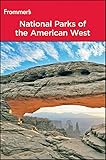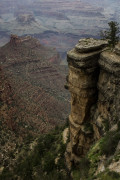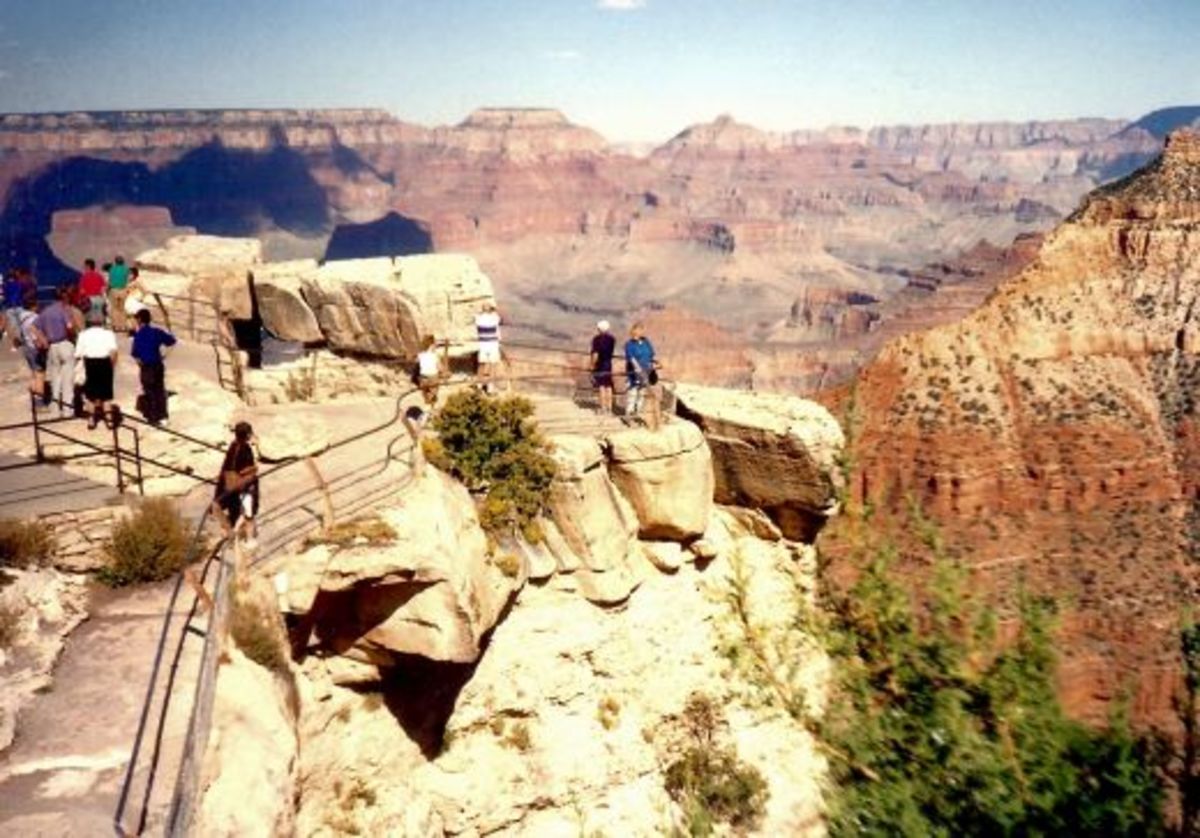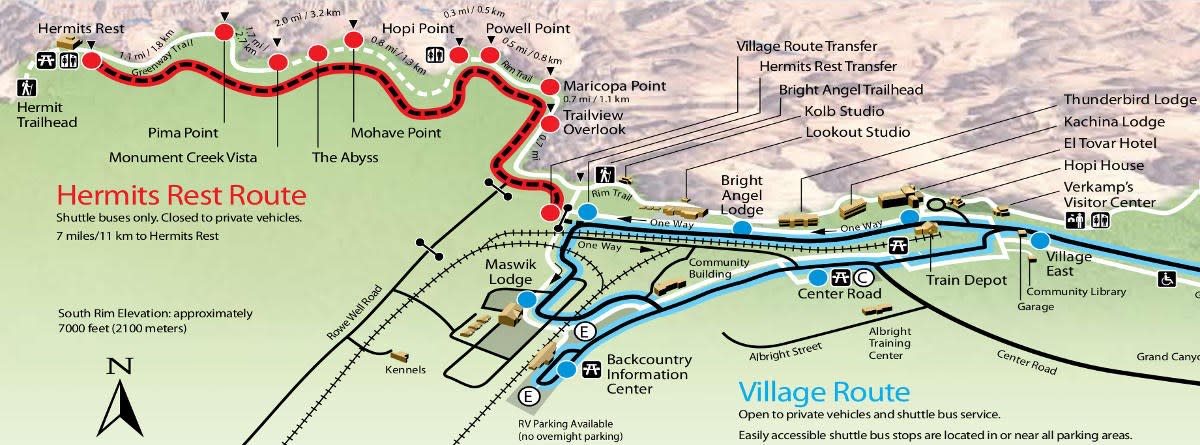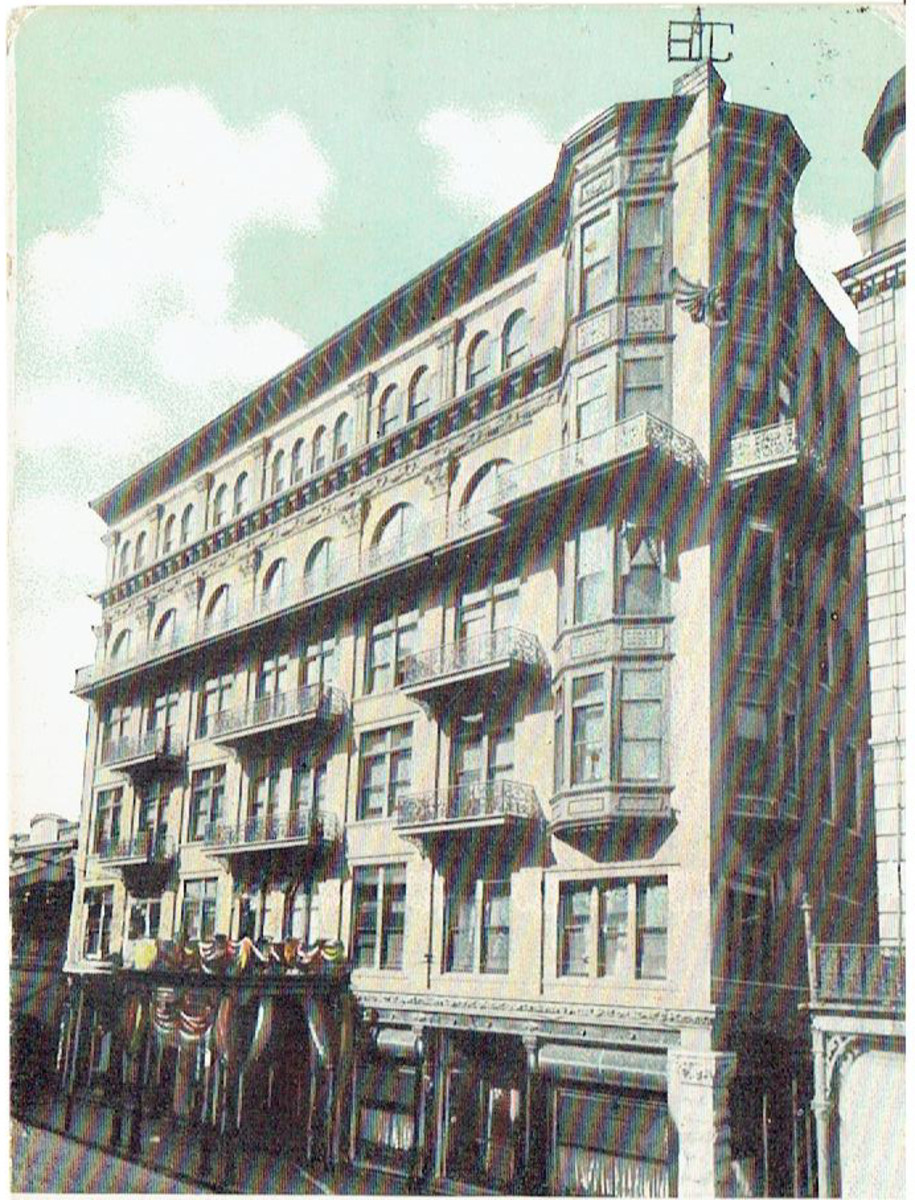The Grand Canyon National Park
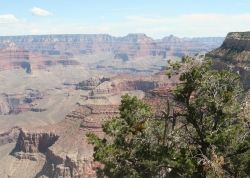
The Grand Canyon
The Grand Canyon is a massive geological feature in the state of Arizona.
Due to efforts of conservationists, the region became a Forest Preserve in 1893 and was protected from unrestricted hunting and logging. Later, because of its popularity, the region was made into Grand Canyon National Park. The park covers over 1.2 million acres of land, and hosts nearly 5 million visitors annually.
The formation of the Grand Canyon is a problem for uniformitarian geologists, but fits well into the framework of the Biblical global flood. Exposed within walls of the Grand Canyon are rocks that were likely created during the creation, along with massive layers resulting from sedimentation during the flood.
Flood geologists such as Steven Austin assert that during the last half of the year of the flood, the Colorado Plateau was lifted by tectonic forces more than a mile above sea level.
This uplift then formed a dam, which blocked river drainage and caused one or more lakes to build behind the dam until it was breached. The erosion of the massive canyon system was probably driven by landslides and high-speed waters carrying gravels and other sediments during the catastrophic lake drainage.
SOURCE: Northwest Creation Network http://creationwiki.org/Grand_Canyon
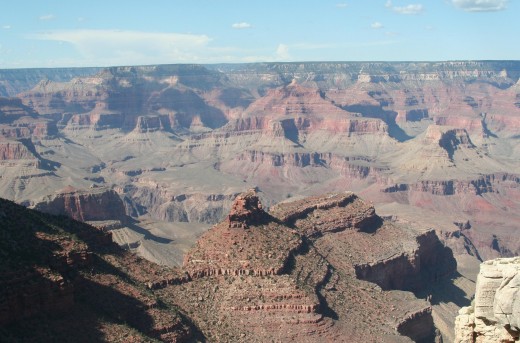
Grand Canyon: Monument to the world-wide Flood
Formation of the Grand Canyon is a problem for evolutionists, but fits well into the framework of the Bible.
For more than a century, evolutionary geologists have tried to explain how the Grand Canyon in the United States might have formed slowly over millions of years. Ideas that the Colorado River eroded the canyon, or that enlargement of streams and gullies caused it, have been shown to be improbable. Both these theories have a difficult time explaining where the products of tens of millions of years of river erosion went.
Earle E. Spamer said of the problem: 'The greatest of Grand Canyon's enigmas is the problem of how it was made. ... Grand Canyon has held tight to her secrets of origin and age.'
Yet the canyon's rock strata can be interpreted well from a creationist and catastrophist view.
Creationist geologist Dr Steven Austin says:
'The crystalline-basement rocks exposed deep within the Canyon (schist, granite, and gneiss) represent some of earth's oldest rocks, probably from early in Creation Week. Tilted, deeply buried strata (the "Grand Canyon Super group") show evidence of catastrophic-marine sedimentation and tectonics associated with the formation of an ocean basin midway through Creation Week, and may include ocean deposits from the post-Creation, but pre-Flood world. The Canyon's characteristic horizontally stratified layers (the "Paleozoic Strata") are up to 4,000 feet thick and are understood to be broad sedimentary deposits in northern Arizona dating from the early part of Noah's Flood. Remnants of strata overlying the rim of Grand Canyon (the "Mesozoic Strata") are associated with a widespread erosion surface.'
Dr Austin says that these features suggest tectonics, sedimentation, and erosion during the last half of the Flood year as the Colorado Plateau was lifted more than a mile above sea level.
'The catastrophic erosion of Grand Canyon (probably a result of drainage of lakes) was associated with river-terrace gravels, lake sediments, landslide deposits, and lava flows of the post-Flood period,' he says.
Rather than being easily explained by evolutionists, the formation of the Grand Canyon is a problem for evolutionists, but fits well into the framework of the Bible.
SOURCE: Answers magazine
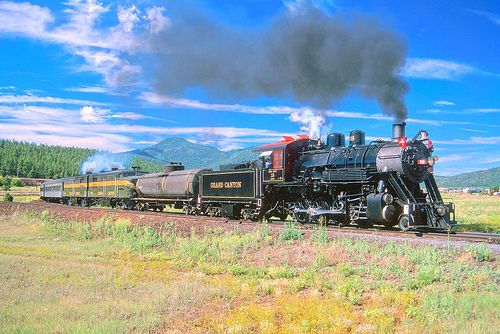
Return to the Old West via the Grand Canyon Railway
The iron horse finally conquered the West's great wilderness.
It wasn't the cowboys and it wasn't the cavalry, but the iron horse that finally conquered the West's great wilderness. And there's no better example of hidden treasures revealed by the locomotive's journey west than the Grand Canyon.
While the canyon's potential was realized as early as the 1880s, the journey at the time was difficult to say the least. The remoteness of the area would have sealed its fate as merely a very deep hole in the earth marked on a map, had it not been for William Owen "Buckey" O'Niell and his grand visions of a railroad to the canyon.
O'Neill, who was mayor of Prescott at the time, owned several mineral claims and had built a substantial cabin on the South Rim of the Grand Canyon. But while he'd found his wealth, he wasn't able to unlock it from the canyon due to the high cost of transporting the ore. A man of action, he lobbied for nearly five years before securing the funding for the Railway.
On September 17, 1901, O'Neill's vision became a reality when the first steam train took passengers and supplies from Williams, Arizona, to the South Rim of the Grand Canyon.
The Railway revolutionized the canyon, sharing its natural wonder with the general public. In its heyday, Grand Canyon Railway - then a subsidiary of the Atchison, Topeka and the Santa Fe Railway Company -
Had two scheduled arrivals per day at the South Rim, but as many as six special trains might also arrive at the Grand Canyon in one day.
Notable passengers included President Theodore Roosevelt, President William Howard Taft, John Muir, President Franklin Delano Roosevelt, King Paul and Queen Fredericka of Greece, President Dwight David Eisenhower, Clark Gable, Candice Bergen, Jimmy Durante, Doris Day, Arizona Senator Barry Goldwater and Arizona Governor Rose Mofford.
It was the preferred method of travel until the advent of the automobile. And as America fell in love with the automobile, the locomotive's romantic wail faded like an Arizona sunset.
The final rays of golden sunlight disappeared June 30, 1968 as Train No. 14, a diesel locomotive pulling only one baggage car and one coach car, left Grand Canyon Depot with just three people aboard. Beginning the 65-mile trek to Williams, the engineer gave the horn two short blasts heard only by those aboard and canyon wildlife. No one was present to send the train off, or to celebrate the contributions the Railway had made.
As the last passenger train traveled out of sight, the tracks grew quiet and stayed that way for nearly 20 years.
The tracks began experiencing minor rumblings again in the late 1980s. Investors came and went, promising restoration then fleeing when financing went awry. The town of Williams was struggling, but still daring to dream that the Railway would return on day, and rebuild the small town celebrated as the Gateway to the Grand Canyon®.
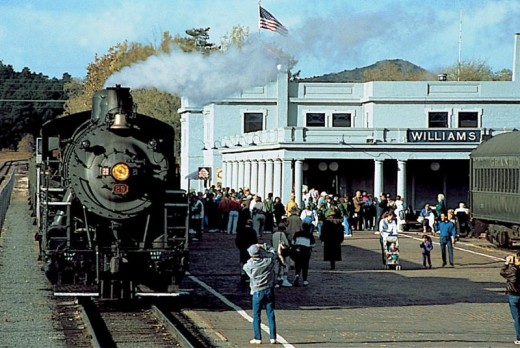
RETURN TO THE OLD WEST
Max and Thelma went to work restoring the dilapidated Williams and Grand Canyon depots
Pulling together a talented team of people including steam locomotive experts, Max and Thelma went to work restoring the dilapidated Williams and Grand Canyon depots as well as the 65 miles of weather-beaten railroad track. The team rebuilt washout areas and bridges, replacing 30,000 railroad ties and countless more rails, beams and spikes.
Their hard work paid off, and on September 17, 1989 – 88 years to the day from the first train to the canyon – Max and Thelma Biegert brought the powerful pull of the steam locomotive back to Grand Canyon National Park.
More than 10,000 people and dignitaries arrived in Williams to celebrate the return of the Railway, with more gathered to greet the passengers arriving at Grand Canyon Depot. It seemed as though the whole world recognized the importance of returning train service to the canyon.
Grand Canyon Railway gained momentum with each passing trip to the canyon, growing into the operation it is today. Providing daily service and transporting more than 225,000 passengers to the Grand Canyon each year (more than 2 million since 1989), the Railway is much more than an alternative mode of transportation.
The simple act of returning train service restored an integral part of the Grand Canyon’s history. The wail of the historic locomotives traveling the rails today, shares the story of how the canyon came to be.
No, the West was not won by cowboys or cavalry, but by the iron horse and the people whose vision of grandeur was matched only by the Grand Canyon itself.
Grand Canyon National Park - Shane Christensen
Frommer's Grand Canyon National Park (Park Guides) [Paperback]
Shane Christensen (Author)
Insider advice on hiking and adventures, including helicopter tours, mule rides, and rafting trips along the Colorado. Plus, our hotel reviews and campground guide breaks down the best sites to spend the night, both in the park and nearby.
learning to play the fiddle
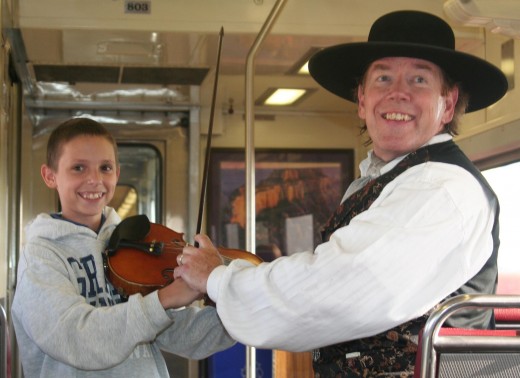
Shaela at the Grand Canyon
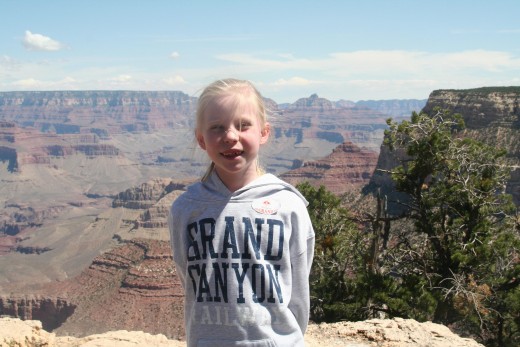
Devin at the Grand Canyon
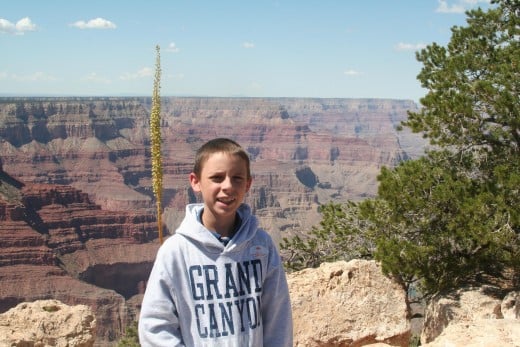
Grandpa and Nick at the Canyon
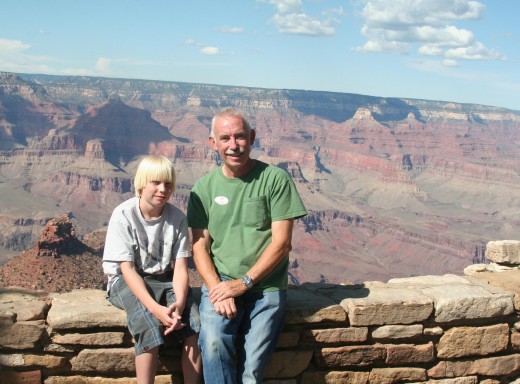
Harry and CC with the Sheriff
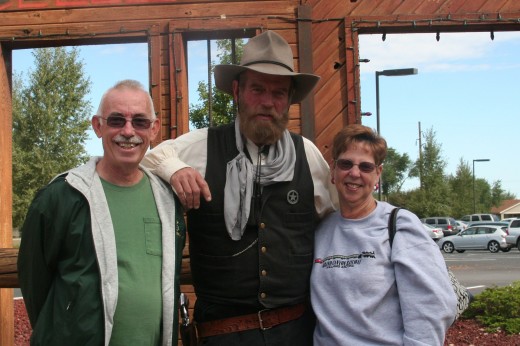
The Grand Canyon
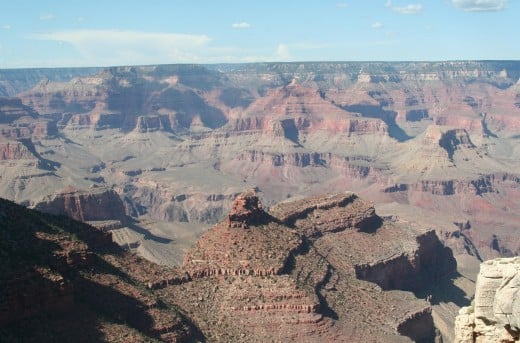
Grand Canyon Part I - From CreationWiki, the encyclopedia of creation science
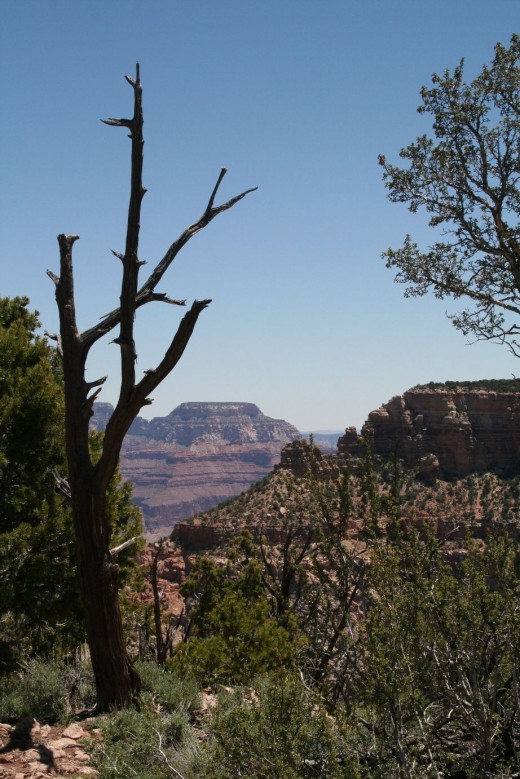
The Grand Canyon is a massive geological feature in the US state of Arizona. Due to efforts of conservationists, the region became a Forest Preserve in 1893 and was protected from unrestricted hunting and logging. Later, because of its popularity, the region was made into Grand Canyon National Park. The park covers over 1.2 million acres of land[1], and hosts nearly 5 million visitors annually.[2].
The formation of the Grand Canyon is a problem for uniformitarian geologists, but fits well into the framework of the Biblical global flood. Exposed within walls of the Grand Canyon are rocks that were likely created during the creation, along with massive layers resulting from sedimentation during the flood. Flood geologists such as Steven Austin assert that during the last half of the year of the flood, the Colorado Plateau was lifted by tectonic forces more than a mile above sea level. This uplift then formed a dam, which blocked river drainage and caused one or more lakes to build behind the dam until it was breached. The erosion of the massive canyon system was probably driven by landslides and high-speed waters carrying gravels and other sediments during the catastrophic lake drainage.[3]
Grand Canyon Part II - From CreationWiki, the encyclopedia of creation science
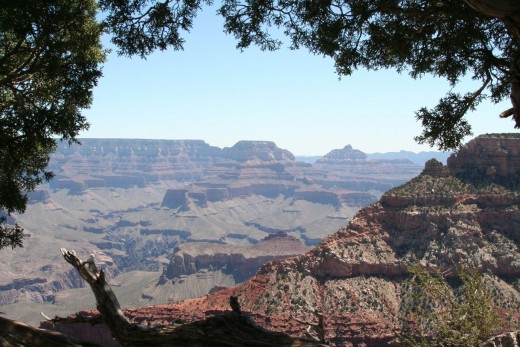
Main Article: Strata
Some of the most outstanding features of the Grand Canyon are the layers of sedimentary rock called strata that have been exposed by the erosion event that carved this immense canyon system. Layers of sedimentary rocks hundreds of feet thick blanket the world, and can be traced across entire continents and even correlated with layers on other continents. By comparing the sequence of layers from various areas, the cross section of strata known as the geological column was developed.
The strata seen in the photo below were formed during the flood of Noah via hydrologic sorting. Due to continuous recent erosion, we are now able to see the layers formed during the flood.
"The crystalline-basement rocks exposed deep within the Canyon (schist, granite, and gneiss) represent some of earth's oldest rocks, probably from early in Creation Week. Tilted, deeply buried strata (the "Grand Canyon Supergroup") show evidence of catastrophic-marine sedimentation and tectonics associated with the formation of an ocean basin midway through Creation Week, and may include ocean deposits from the post-Creation, but pre-Flood world. The Canyon's characteristic horizontally stratified layers (the "Paleozoic Strata") are up to 4,000 feet thick [1,200 metres] and are understood to be broad sedimentary deposits in northern Arizona dating from the early part of Noah's Flood. Remnants of strata overlying the rim of Grand Canyon (the "Mesozoic Strata") are associated with a widespread erosion surface.[4]
For more information, follow this link to Creation Wiki >> http://creationwiki.org/Grand_Canyon
Grand Canyon Geologic Column
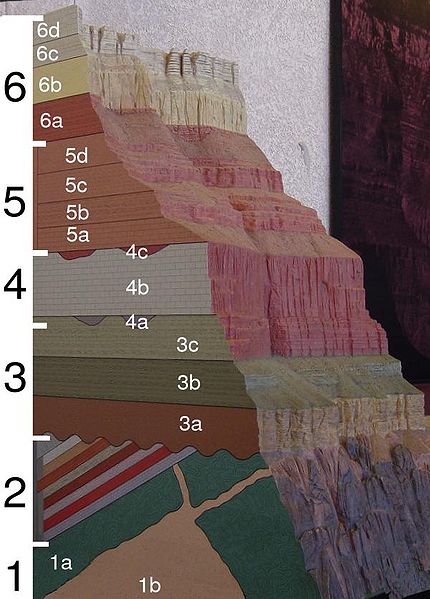
Grand Canyon National Park Videos - Return to the Old West via the Grand Canyon Railway
It wasn’t the cowboys and it wasn’t the cavalry, but the iron horse that finally conquered the West’s great wilderness. And there’s no better example of hidden treasures revealed by the locomotive’s journey west than the Grand Canyon.
The Grand Canyon is a massive geological feature in the state of Arizona. Due to efforts of conservationists, the region became a Forest Preserve in 1893 and was protected from unrestricted hunting and logging. Later, because of its popularity, the region was made into Grand Canyon National Park. The park covers over 1.2 million acres of land, and hosts nearly 5 million visitors annually.
New YouTube Grand Canyon Skywalk Video
Creationist geologist Dr Steven Austin says:
'The crystalline-basement rocks exposed deep within the Canyon (schist, granite, and gneiss) represent some of earth's oldest rocks, probably from early in Creation Week. Tilted, deeply buried strata (the "Grand Canyon Super group") show evidence of catastrophic-marine sedimentation and tectonics associated with the formation of an ocean basin midway through Creation Week, and may include ocean deposits from the post-Creation, but pre-Flood world. The Canyon's characteristic horizontally stratified layers (the "Paleozoic Strata") are up to 4,000 feet thick and are understood to be broad sedimentary deposits in northern Arizona dating from the early part of Noah's Flood. Remnants of strata overlying the rim of Grand Canyon (the "Mesozoic Strata") are associated with a widespread erosion surface.'
Grand Canyon National Park - These videos of the Grand Canyon were taken from the South Rim
A powerful and inspiring landscape, the Grand Canyon overwhelms our senses through its immense size; 277 river miles long, up to 18 miles wide, and a mile deep.
Grand Canyon: A Different View - Grand Canyon: Monument to Catastrophe
Whether gaping down the huge chasm from the rim, or navigating the Colorado River below, visitors to the Grand Canyon see a perspective that words can't describe. Visit this marvelous site yourself, through the photographs and essays in this book. "The Grand Canyon: A Different View"
Grand Canyon: Monument to Catastrophe
Eminent geologist Dr. Steven Austin explains from a biblical standpoint how The Grand Canyon was formed.
Format: Softcover
Dimensions: 8.25 x 10.75 in.
Pages: 282
Ages: 15 & up
Publisher: Institute for Creation Research
Published: 1994
Eminent geologist Dr. Steven Austin explains from a biblical standpoint how the Grand Canyon was formed. This book contains a wealth of information about geology and biology that equips Christians to defend Genesis, the young earth position, the worldwide Flood, etc.
Also includes material on the eruption of Mount St. Helens.



